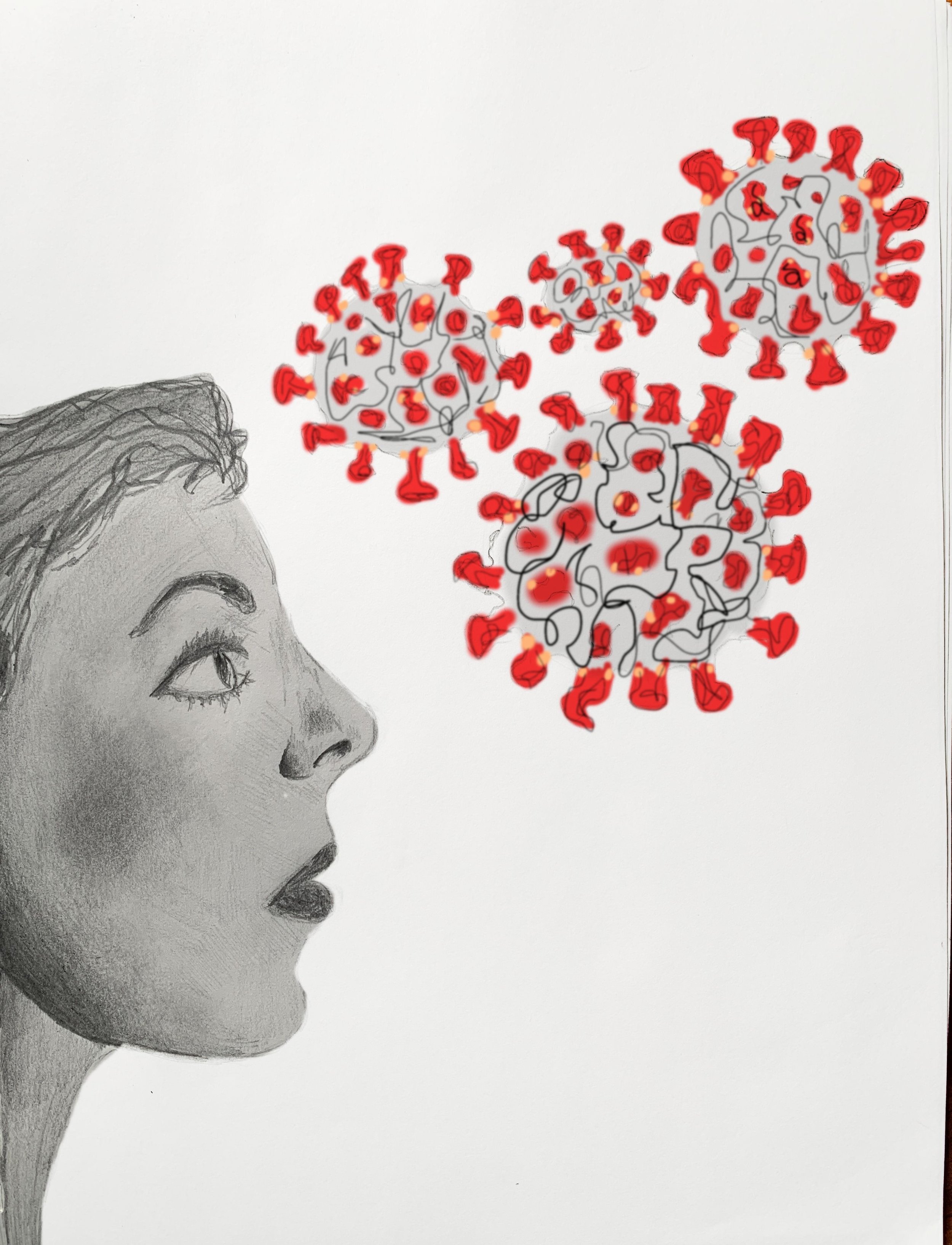Women found to be underrepresented in scientific article citations
A study published on Oct. 6, 2022, in Nature Physics demonstrated a pattern of under-representation of scientific works authored by women in physics articles citations. The study revealed that the bias towards citing research authored by men primarily occurs among male writers and researchers, as well as when the citing author has less familiarity with the subject they are writing about.
More people need to start talking about long COVID
President Joe Biden’s “60 Minutes” interview remarks on Sept. 18, 2022, during which he declared that “the pandemic is over,” serve as a painful confirmation that the institutions meant to protect us — namely the government — have neglected the American public in the face of a more subliminal, yet similarly-grave ailment: long COVID. The Centers for Disease Control and Prevention stated that Long COVID is a term used to refer to a variety of conditions that develop after a COVID-19 infection.
James Webb Space Telescope photographs universe
Since the James Webb Space Telescope was launched on Dec. 25, 2021, it has allowed the curiosity of the human mind to travel through space. The JWST has now been in space for almost nine months and has not disappointed with its remarkable discoveries. According to NASA’s webpage about the telescope’s first images, scientists over the past few months have been able to acquire “full-color, … seemingly three-dimensional” pictures using the JWST. The clarity of its images is a result of the telescope’s multiple sensors and four-foot long mirror which allow it to observe galaxies that were formed 13.5 billion years ago.
Health panel recommends routine anxiety screenings for adults in acknowledgment of national mental health crisis
In a historic first, the U.S. Preventive Services Task Force — a panel of health experts — recommended routine anxiety screenings for all adults under the age of 65, according to The New York Times. The task force explained that their declaration is in an effort to detect and treat mental health disorders earlier, and follows a similar advisory released earlier this year for children and young adults, reported The New York Times.
‘Shotgun scientist’ Angelica Patterson becomes Miller Worley Center for the Environment curator of education and outreach
By Yuyang Wang ’24
Staff Writer
On Aug. 1, the Mount Holyoke College Miller Worley Center for the Environment welcomed Dr. Angelica Patterson as the new curator of education and outreach.
According to Christian Feuerstein, director of news and media relations at Mount Holyoke, “Patterson received her bachelor’s in natural resources from Cornell University and her masters, master of philosophy and doctorate degrees from Columbia University in plant ecophysiology.” According to a recent interview with Dr. Patterson for Mount Holyoke News, she worked at Barnard College as a research assistant in a plant lab and as an administrator in its Environmental Science Department for seven years before coming to Mount Holyoke. Patterson said she loved this work and was inspired by the feeling of being immersed in a community of passionate students eager to lead progressive changes in their fields. “When I saw the opportunity to once again work and collaborate amongst inspiring young leaders again, I leaped at the chance,” Patterson said.
“When I saw the opportunity to once again work and collaborate amongst inspiring young leaders again, I leaped at the chance.”
When discussing her main responsibilities as the curator of education and outreach, Patterson said, “I will be responsible for the development and implementation of curricular opportunities for the Center, including the Campus Living Laboratory. This will involve outreach with and general coordination among departments, instructors, classes, MHC organizations and public audiences.” Patterson said a central goal for her work is “to broaden MWCE’s reach across campus and the local community, which will first entail communicating our mission and the resources we have that can be creatively used to support various classrooms and organizations as well as independent projects and learning experiences. I envision the development of larger projects that can better integrate environmental data into the classroom, establish community science opportunities across the Campus Living Lab and utilize more innovative technology in the teaching of environmental sciences.”
Outside of her role at the MWCE, Patterson described her background in plant science with a focus in plant ecophysiology, which she described as “the study of the physiology of plants and their responses to changes in environmental conditions.” According to Feuerstein, Patterson studies trees’ adaptation to global warming.
As she reflected on why she chose this field, Patterson said she was inspired by a paper she read during graduate school at Columbia University. “We read a paper by Richard Pearson called ‘Climate change and the migration capacity of species.’ In the paper, they noted that the percentage of species ‘committed to extinction’ using climate change projections for 2050 was around 21-23 percent with unlimited dispersal with the percentage going as high as 38-52 percent if they had no ability to disperse.” She went on to explain that although plants are immobile organisms, they can still migrate via seed dispersal. While plant distributions across the world have been changing since the beginning of time, rapidly warming climates result in plants migrating up to ten times faster than they did before in order to survive. “I was interested in learning how trees in the Northeastern United States were responding to warmer temperatures and see if there was a physiological mechanism behind their responses and if those responses differed between plants that had historically different geographic range distributions (northern vs. central vs. southern ranged trees),” Angelica said.
Currently, her research involves measuring the photosynthetic and respiration rates of leaves. Usually, the leaves she wants to study are on the high top of the forest canopy, so she has had to come up with a way to collect these leaf samples. She explained that she “would go into the field and use a shotgun to shoot branches down from the top of the canopy. These leaves are usually growing in full sunlight, so by sampling canopy level branches, we could reduce the amount of variation we would find in their physiological responses to experimental treatments.”
Feuerstein explained that this practice “... led The Guardian to dub her ‘the shotgun scientist’ in a 2020 article.”
Patterson went on to describe the results of this process. “In summary, we found that northern ranged trees had the highest rates of respiration (or carbon loss) under elevated temperatures, whereas the central ranged trees, such as the red oak, had similar rates of respiration to southern ranged trees as temperatures elevated.” Patterson explained that these findings mean that central ranged trees — such as the red oak — may be at a disadvantage when it comes to sustaining reproduction and growth as the climate warms due to climate change.
This emotional connection to the forest is one of her reasons for coming to work at Mount Holyoke. When asked about her favorite place on campus, she answered,“I would be remiss if I did not mention the natural spaces that make a part of the Campus Living Laboratory as one of the most resourceful and favorite places at MHC. I especially enjoy the trails through Prospect Hill [among] the trees — a forested area, which always brings me peace and joy.”
Residents of Jackson, Mississippi lose access to safe and reliable water
Photo courtesy of Flickr.
Officials in Jackson, Mississippi have appealed state and federal aid in managing their water crisis.
By Shira Sadeh ’25
Science & Environment Editor
Content warning: This article discusses environmental racism.
On Aug. 29, Jackson, Mississippi Mayor Chokwe Antar Lumumba released an emergency order declaring a water system emergency in the city. Mississippi Governor Tate Reeves declared a state of emergency the same day, when the majority of the city’s 150,000 residents were left without access to running water, according to a Vox article. The report states that the crisis is a result of damaged infrastructure at the O.B. Curtis treatment plant and water pump issues at the secondary J.H. Fewell treatment facility.
The O.B. Curtis plant first experienced malfunction following high rainfall, which flooded the Pearl River, an Associated Press News article explained. The sudden influx of water slowed the plant’s treatment process, depleted water supply tanks and caused pressure to drop. According to AP News, city officials explained that the plant was already using backup pumps when this occurred, and stated that a rental pump had been installed to fix the pressure issue. Despite the restoration of pressure, many residents were still without access to clean water.
According to Vox, many residents had no access to water, while others observed polluted and discolored water trickling out of their faucets. This prompted the city to issue a water boiling advisory, instructing residents to boil water for one minute before using it.
As outlined in a Time article, issues of infrastructure upkeep have been plaguing Jackson for almost 80 years. Since the 1940s, mayors and city council members have been calling for more funding to repair failing facilities. Since the 1970s, the U.S. Environmental Protection Agency has expressed concerns for the city’s disrepair and urged Jackson to invest more in protecting clean water access.
According to a BBC article on the issue, Jackson has struggled to provide citizens with safe and reliable water in more recent years as well. In the winter of 2020, when freezing temperatures caused a water plant to malfunction, parts of the city were without water for nearly six weeks. Since then, multiple infrastructure failures have caused repeated boiling advisories and extremely low water pressure in many areas of the city.
A Brookings article explained that due to a lack of steady economic growth and recent declines in median wages, municipalities and utility plants have been unable to generate revenue that covers infrastructure upkeep costs. The cost of fully repairing infrastructure not only to solve this crisis, but also to prepare for future flooding, would be approximately $2 billion. Jackson’s situation is similar to past, present and seemingly future cases in many predominantly Black metro areas, such as Flint, Baltimore and Detroit.
Time also described community members’ frustration with state and federal officials, calling them out for only attempting to address the issue now rather than implementing preventative measures before the crisis occurred.Currently, over 82 percent of the city’s population is Black, and almost a quarter live under the poverty line, another fact that many suggest is why Jackson’s infrastructure has been allowed to fall into disrepair. “We’re facing an environmental injustice and we have been ignored. Jacksonians and people around the area have been ignored by state leadership and now they want to swoop in — all hands on deck, fixing the problem — but we’ve been asking for help for years, not even just from this administration,” Maisie Brown, a community organizer, told Time.
Professor Spencer Smith finds aesthetic beauty in physics
“I grew up in a family that valued art a lot — my father is an art historian — so I get nostalgic when I go to museums and churches. … I grew up being immersed in that world,” Spencer Smith, assistant professor of physics at Mount Holyoke College, explained in an interview with Mount Holyoke News. “When it [comes] to physics, it seems completely different [from art]. … But how I initially got into physics was from an aesthetic point of view. … I saw aspects of physics that I thought are aesthetically beautiful. You can think of this in terms of symmetries, [like the] Principle of Simplicity, or you can … [think of] the complexity that can come out of very simple systems,” Smith said.








